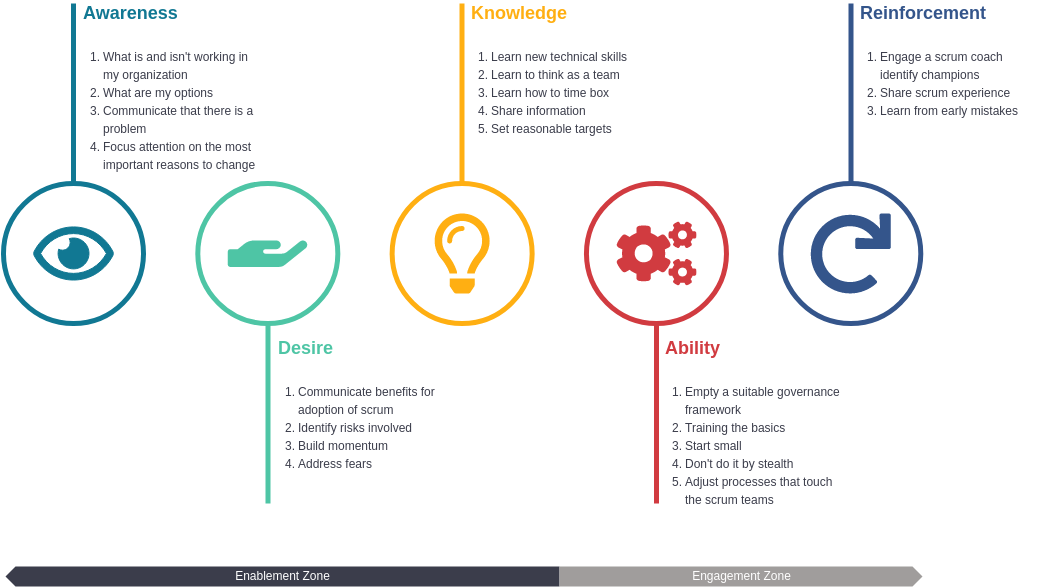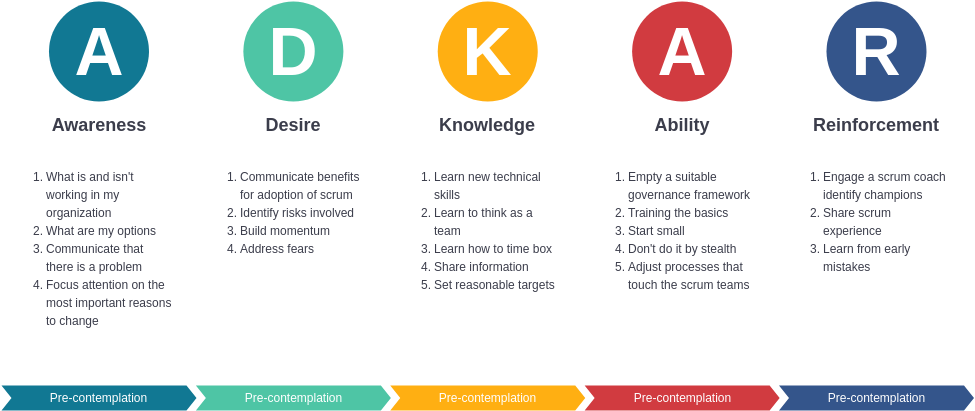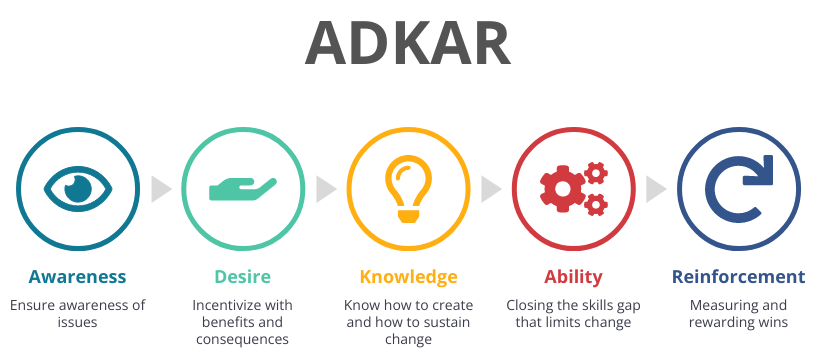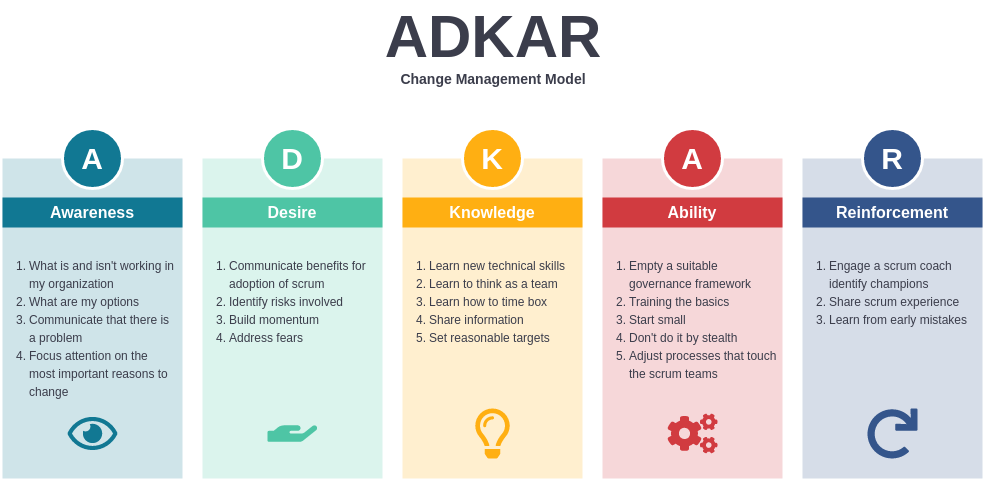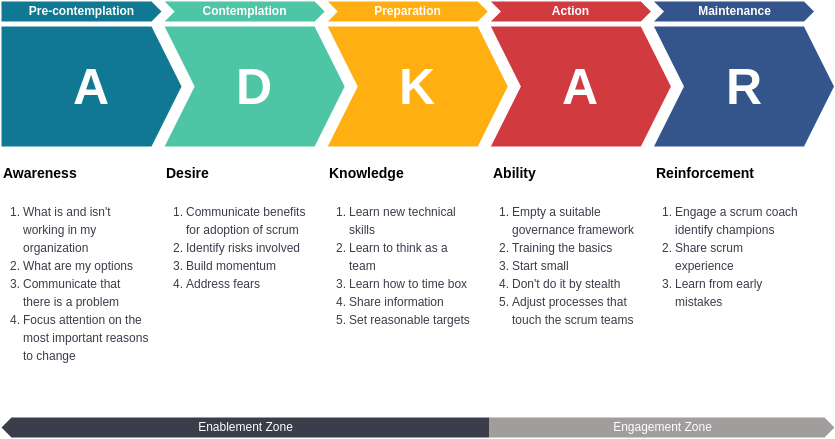ADKAR Model at Work
The ADKAR model helps us understand what individuals need when changes occur in their work and guides us on what support to provide to help them make a smooth transition. Let's apply ADKAR to the implementation of a new software tool.
Awareness - Are your employees aware of the need for change? If employees don't know they need to change when implementing change, their response may be, "This is a waste of time, it was fine before. Awareness of the need for change in your business or organization is critical. Awareness may include explaining to employees that the vendor will no longer support the old software and that the new software will meet customer needs and increase efficiency. Organizational awareness information is most effective when it comes from leaders at the top of the organization. Based on this awareness, the response may be very different: "How soon will this happen, and how will it affect me?
Desire - Do your employees have the desire to be part of the change? If they don't have a desire for change, you may hear, "I'm not interested in change. What does that mean to me? In this case, the resisting employee's immediate manager or supervisor is the best person to help. They are the closest to the employee and understand their daily work. Through one-on-one dialogue, the manager can discover the reasons for the employee's personal resistance and remove barriers to the employee's acceptance of the change. Managers can also help create desire by translating change into meaningful terms and help answer the question, "What will it do for me? While managers play a key role here, ultimately employees must make their own personal decisions to participate in the change based on their unique motivations.
Knowledge - Do your people have the knowledge to make the change happen? In order to change effectively, you need to know what to do. If training is provided before then, employees will not connect training to change and will not participate in knowledge building. To make the most of the training investment, it is also important to ensure that the training is tailored to the role employees will play in the change.
Ability - Can your employees put their knowledge into practice? Knowing how to perform in a future change state and having the ability to actually perform in a future change state are very different. If an employee has the knowledge but not the capability, then you may hear, "I didn't do these new steps right," or "I did it there, but it took me twice as long. In order to connect the knowledge and competency gaps, employees can benefit from coaching and hands-on practice in an environment that allows them to make mistakes and ask questions. It also takes time for change to occur, and when competency is achieved, change will naturally occur and you will see new behaviors emerge.
Reinforcement - Do you have the ability to reinforce change to prevent your employees from reverting to old habits? When reinforcement is not in place, employees may use workarounds or rely on old spreadsheets rather than new systems. You may hear things like, "The new way is taking too long, I'll keep doing it my way," or "I keep forgetting to include the new department. The human brain is habitual, and we are physiologically programmed to revert to old habits, and we must have reinforcement to maintain this change. We must have reinforcement to sustain the change. Monitor whether the change continues, where it occurs, and celebrate and recognize it. Positive recognition is a good way to show that it is important to reward employees for making change and demonstrating participation. If some employees are reverting to old processes or habits, check to see if they need more training or coaching and reinforce that they are looking forward to continuing to work in the new way.
Reference
